Close your eyes and picture France. I’d bet scenes of chic Parisians sipping on wine at sidewalk cafes, strolling the banks of the Seine, and biking with baguettes in their basket come to mind. I’m not a gambler, but I’d also bet that what you’d never picture are cowboys, cattle ranches, and bull fighting. But in Western Europe’s largest river delta, you’ll find cowboys on white horses wrangling their fighting bulls for the bullrings of the Languedoc, ancient walled cities, and salt flats teeming with pink flamingos. This is the Camargue, France.
Cruising the Camargue’s Canals
The Camargue is criss-crossed with canals leading right to the Mediterranean sea and one of the best ways to explore this area of France is barging the canals on a houseboat. With only a few canal locks and no experience required, anyone can head to the Camargue on a boating holiday. And that’s exactly how we explored this little slice of France.
With a short lesson on how to sail, and more importantly, moor our very own houseboat, we were confidently cruising the canals in no time. The Camargue is the sunniest area of France, boasting over 300 days of sunshine each year, and relaxing on a boat is the ultimate indulgence. I’d sit on the bow soaking up the sunshine and taking in the scenery as Tim captained us from port to port.
Villages with mazes of Medieval alleys, vineyards, walled crusader towns, and nature reserves all awaited us and were easily accessible by foot or bicycle from each of our ports.
Houseboats can be rented from Arolles Marine and range in size accommodating 2 – 8 persons.
Beaucaire
Though technically not part of the Camargue, Beaucaire is just north and worth a visit for its charming maze of Medieval alleys and its crumbling castle. The castle looks over the Rhône River and across to Provence. The current structure was built in the 12th and 16th centuries over the top of the Roman structure, which was torn down on the orders of the Cardinal de Richelieu. A small museum on the castle grounds tells the story of Beaucaire from its Roman times and the Middle Ages, when the town was home to a great fair.
Though the rest of the town is fairly sleepy, it’s worth a stroll through its streets to admire the grandiose mansions. Keep an eye out for Le Drac and his son, which are from a famous French legend chronicled by Gervase of Tilbury in the 13th century. As the tale goes, Le Drac kidnapped a woman who was washing her laundry in the Rhône, dragged her to the bottom, and forced her to become his son’s nanny. She returned to her husband seven years later unharmed. Le Drac could take on human forms, and one day while the woman was walking in the square, none other than Le Drac appeared. The woman spotted him, and at being discovered, he returned forever to the depths of the Rhône River. Hopefully we wouldn’t meet him while barging the canals!
Lunch or dinner should be enjoyed canal side at the Quay. Head to Restaurant Le Soleil and try the fresh fish and seafood. Their moules frites (mussels and french fries) are seriously the best mussels we’ve ever had and it was a generous pot that was more than enough for two. We promptly recommended the dish to the Australian couple who were also barging the canals and found their way to Restaurant Le Soleil.
Bicycles come in handy so that you can bike the few kilometers to Mas des Tourelles, the most unique winery we’ve ever visited. A villa from the Roman Empire was in this very spot during and Roman wine was produced here. Thanks to excavations, ruins from the villa have partially been uncovered and the recipes of Roman wines discovered.
Mas des Tourelles continues to produce three Roman wine recipes in the ancient method, using the same type of press that would have been used in Roman times and fermenting the wine in casks almost entirely buried in the ground and adding herbs. The winery produces around 10,000 bottles of the Roman wines each year and has a big festival for the grape harvest.
Curious, we couldn’t wait to taste the Roman wines and they are incredibly different than the modern wine we know. Mulsum, which translates to wine with honey, is made from the red grenache grape with thyme, red pepper, honey, ginger and cinnamon. During Roman times it served as a good antiseptic and the very rich tended to drink it with ice in it.
The next wine, Turriculae, is deceptive. It smells sweet to the nose, but it is made with defrutum (a grape juice syrup), curry, and sea water. It actually tastes salty on the palette. This is also the only exact Roman wine recipe found and produced to date.
We finished off our Roman wine tasting with Carenum, made from the white grenache grape and with a large quantity of defrutum added. Though not typically a fan of sweet wine, it was quite good. All three of the Roman wines produced at Mas des Tourelles can keep for 4 – 5 years before drinking, though are really intended to be drank right away.
Just down the road a little further from Mas des Tourelles, visit Chateau Mourgues du Gres to taste more modern productions. This winery is set amongst fruit orchards in the lovely countryside. Chateau Mourgues du Gres is more than a winery – it’s an experience. There are many hiking trails throughout the vineyards and guests can request a picnic lunch for the hike or even stay in the winery’s guest apartment.
Of course, if you want to stop by for a shorter visit you can easily stroll amongst the vineyards and partake in a wine tasting of Chateau Mourgues du Gres’ varieties. And don’t forget to pick up a few bottles to enjoy in the evenings while relaxing on the houseboat!
St. Gilles
St. Gilles is the gateway to the Camargue and home to the Benedictine abbey of Saint-Gilles. The town grew up around the abbey, which was built in the 7th century by a hermit called Saint Giles. The abbey went through periods of destruction and reconstructions during the Middle Ages and what remains is the impressive 12th century Romanesque church atop the 11th century crypt, which contains the tomb of Saint Giles.
Though the church was badly damaged during the religious wars of the Middle Ages and then further damaged in the French Revolution, it is an important pilgrimage site along the Routes of Santiago de Compostela and as such was listed as a UNESCO World Heritage Site in 1998. The church is still an active church and is open to the public for free. You can take a guided tour to learn more about the sculptures on the porticoes and visit the crypt and tomb of Saint Giles beneath the church.
In France’s cowboy country where the tales are tall and meals are robust, you’ll want to try Le Cours before leaving St. Gilles. Here you can try two Camargue specialties: Pastis le Camargue (apertif) and Gardiane la Camargue (bull and wine stew with olives from the Camargue. The Pastis le Camargue is a liquor produced from anise, licorice, and 40 different other plants and the distillery that produces it was founded in 1835. You mix it water (the more water the better, in my opinion) and slowly sip the drink before a meal.
Galician
Galician was the smallest of the villages we visited and though the village itself doesn’t have much to see, it’s worth a stop. Take a stroll about the village and bring your wallet, because you’re sure to come away with some local specialties from the charming shop La Laupio. Here we tasted some local wines, a black bull sausage, and cheese. The shop sells all sorts of things from mustard with herbs de Provence to beers brewed in the region. You can even find some handicrafts and clothing to dress like a real French cowboy or cowgirl.
Galician gives you easy access to the Camargue’s nature and if you’re a bird lover, you’ll want to plan to spend time at the Camargue National Park, which you can bike too from the village. The Camargue is home to over 400 migratory bird species and in the summer you can stroll amongst them. Even if the birds have mostly left, as they already had when we visited in September, the reserve is a beautiful place to walk. Just be sure to spray yourself with mosquito repellant as they can be relentless.
Aigues Mortes
Aigues Mortes was the highlight of our visit to the Camargue. Famous for its well-preserved city walls, it is truly a must visit and is particularly spectacular as the sunset illuminates the fortification in a pink-gold hue. Like Dubrovnik, you can walk atop the walls for beautiful views over the nearby salt flats and canal and for a birds-eye view inside the walls.
As you approach the walled city, it’s impossible to know what those walls contain. Inside a labyrinth of streets contain chic boutiques, shops proudly display local artists and handicrafts, and the most delicious food shops selling everything from olive oils and herbs to caramels and biscuits.
Just a few minutes outside the walls, you can take a guided tour of Le Salin d’Aigues-Mortes to see the various production stages of the Camargue’s famous fleur de sel. And aboard the little train that takes you around the factory, you’ll get one of the best views of Aigues Mortes, so have your camera ready.
Camargue White Horses
The Camargue is famous for its white horses, a special breed that are reputedly one of the oldest horse breeds in the world. While some are semi-wild, most of the white Camargue horses are used by the traditional cowboys for rounding up and herding the black bulls.
Though visitors to the Camargue typically can’t ride the famed white horses, there are plenty of stables throughout the region that offer riding to tourists. From €15 per hour in many roadside stables, horseback riding is a great way to explore the marshes and trek across the fields.
French Bullfighting
Perhaps you’re as surprised as we were to learn that it’s not just the Spaniards that partake in bullfighting. But unlike in Spain, there is not a matador and the bulls are not killed. Here in the Camargue, the bulls are revered and loved. You’ll find photos of the favorite bulls in restaurants and shops throughout the region.
The bullfights are a competition of agility and the premise is that men dressed in all white try to steal trophies, which are usually rosettes or tassels, from between the bull’s horns. Also unlike in Spain, bullfighting takes place every week all summer long and is turned in to a carnival-like atmosphere as the competitions move from village to village. Just be careful when exploring – you never know when there might French bulls on the lose!
This post was brought to you by Gard Tourisme and the support of Arolles Marine. However, Luxe Adventure Traveler maintains full editorial control of the content published on this site. As always, all thoughts, opinions, and enthusiasm for travel are entirely our own.
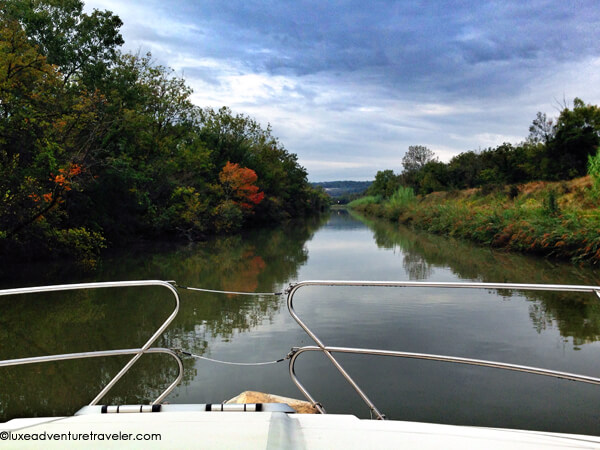
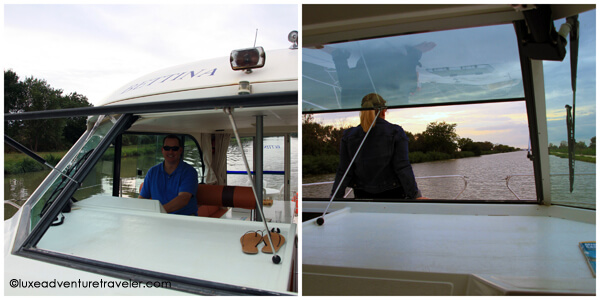
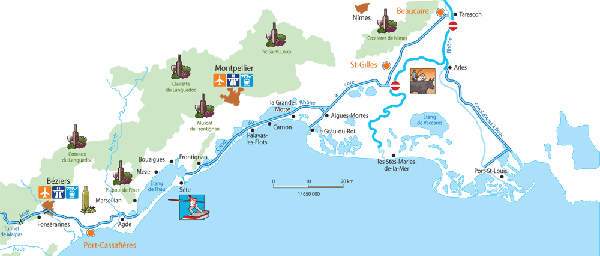
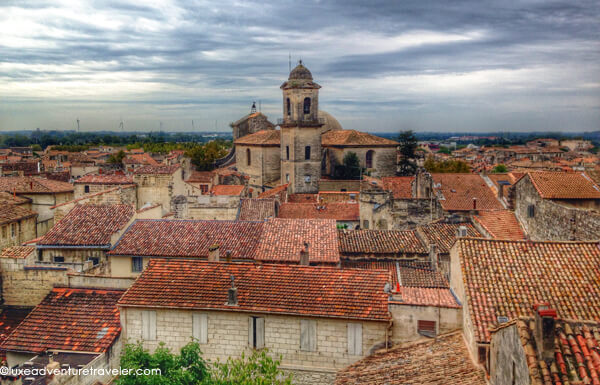
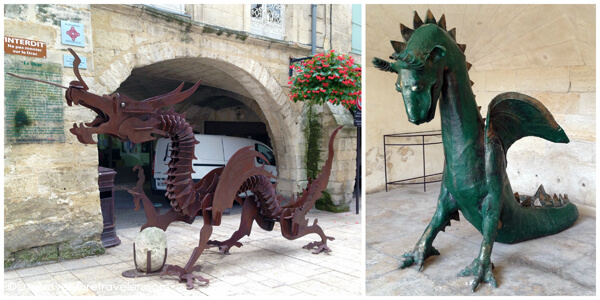


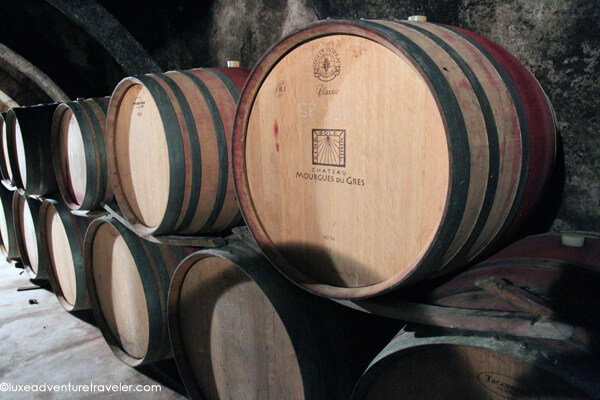


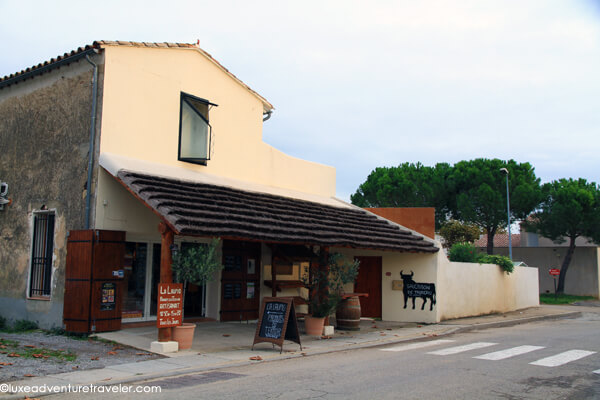
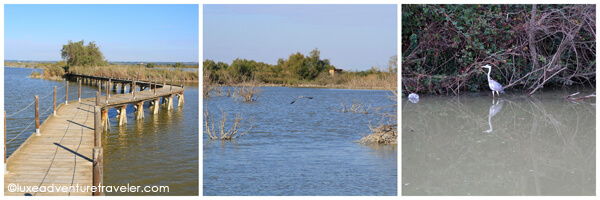

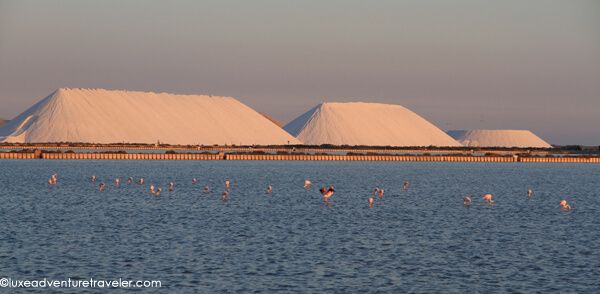
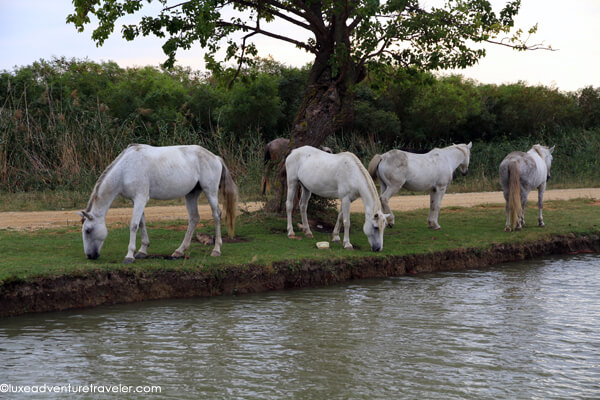


Larry says
Great article. I have never read or heard about this side of France. Cowboys and bullfighting? Amazing!
Jennifer Dombrowski says
I think you’d really like this part of France! Unfortunately, we missed the bullfighting by just one day. We did get to see the arena where it was going to take place in Aigues-Mortes and the carnival they had set up for the festivities. It would certainly be something unique to experience!
Laura says
What an interesting part of France that I knew nothing about. You had me at “fleur de sel” 🙂
Paula says
I had no idea that France had so much of a Roman influence. This looks like a history buff’s dream trip! And SO beautiful!
Jennifer Dombrowski says
We honestly didn’t either. But there are a lot of Roman ruins you can see in the area and also the best preserved Roman aqueduct.
Dan says
How did you know Paris would pop into my head!?! We’ve actually traveled to the South of France near Carcassonne and we love all the ancient architecture and the sunshine. I never knew about the cowboys and river cruises though! Looks like a blast 🙂
Jennifer Dombrowski says
Carcassonne is not too far from the Camargue. It’s really such a unique part of France and totally unexpected! We’d love to visit Carcassonne. There is a luxury hotel located right inside the walls.
Ashley says
Wow, great recap! What a beautiful part of France! I wish I was there right now.
Angie says
I am now totally in love with Beaucaire, it’s beautiful!
Megan says
What an incredible place! And those horses, just beautiful.
Katie says
What a unique trip to France! I had never even heard of it! Great article! Looks so fun!
Cassie says
What a beautiful place, and a wonderful trip! I was just talking to a friend yesterday about sleeping on a houseboat, which is something I’ve never done. What a scenic place to tour!
And I love that the bulls are not killed in France. This is probably the way the tradition will evolve in Spain, as many of the younger generations are opposed to this practice. Traditions change with the times, I respect that.
LyndaS says
Looks like you had a great time – I would have – the scenery, the wine, and the WINE. I am glad to hear that the French bullfights end the way they do. I would love to go see one.
Ky says
To rent a barge at Atolles Marines, do you need a good grasp of the French language? Not sure if my 5 years of High School French will suffice!
Jennifer Dombrowski says
No, we didn’t speak French at all beyond “bonjour”, “merci” and “aurevoir” when we did this boat trip.